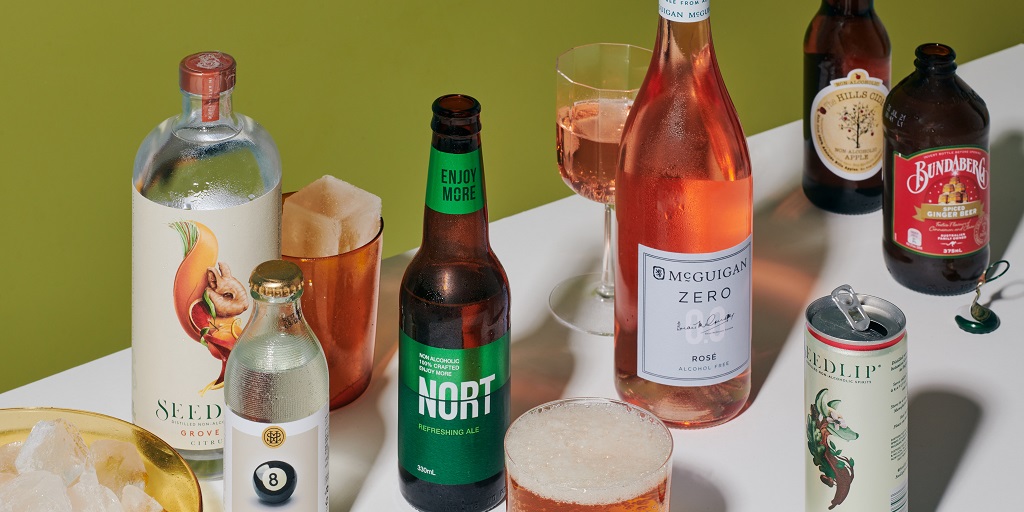
Non-alcoholic beer production methods
Is alcohol-free beer here to stay this time? It looks increasingly so, but why?
Indisputably alcohol-free beer is a current global trend. The segment has taken, and continues to take, market share from its alcoholic counterpart along with the neighbouring soft drinks industry. But perhaps more surprisingly it appears to be forming its own category all together. Fundamental shifts in consumer behaviour towards greater health consciousness, personal and professional ambition, moderation and alternative ‘high’ have led to the development of a plethora of different brands, styles and expressions in the ‘NAB’ (non-alcoholic beer) space.
Traditional Production Methods
Classically alcohol-free beers have been produced through the thermal or physical separation of alcohol from regular beers. These methods have some key benefits that make them appealing to brewers: they harness existing beer streams meaning no requirement for additional brew house capacity. This lineage makes them inherently similar to their alcoholic parent – a strong play for marketers!
Vacuum Distillation
Vacuum distillation is a thermal separation technique that utilises the boiling point of a liquid to separate valuable materials from a combined state. In the case of alcohol-free beer this means removing the alcohol which has a lower boiling temperature than the remaining beer solution.
Membrane de-alcoholisation
Membrane dealcoholisation is a physical separation technique that uses reverse osmosis to separate materials across a semipermeable membrane. With alcohol-free beer, this means removing the alcohol and some water whilst leaving behind a remaining solution of carbohydrates, proteins and minerals essential to the flavour and body of the beer.
Although effective, there are significant considerations with these classic methods: the equipment required is CAPEX intensive, there are batch-size constraints limiting flexibility, different skills are required to operate these processes compared with conventional brewing and they produce effluent streams which must be handled properly. It is worth noting that further blending/re-formulation will be required after alcohol is removed in this way to achieve a drinkable result.
Novel Production Techniques
Ingredient technology has progressed in recent years to provide some compelling alternatives to the classic methods of producing alcohol-free beers discussed above.
Malt and hop extract formulations
Malt and hop extracts can now be used to formulate a highly drinkable alcohol-free beer without the requirement for brewhouse processes. These methods provide the brewer with a highly flexible approach to tailoring their recipe to the exact colour, flavour and mouthfeel desired. Without the reliance on an existing beer stream, formulation from extracts also provides consistency to the profile of the product from batch-to-batch – ensuring that the consumer always has the same experience.

PureMalt ZEBRA is a pale malt extract specifically brewed for the purpose of making alcohol-free beer. Through a dual-fermentation and various stabilisation and refinement steps, ZEBRA provides a beer-like base upon which brewers can build their bitterness, aroma and flavour profile. Unconstrained by batch size, process technology or CAPEX, PureMalt ZEBRA gives brewers a flexible and highly customisable approach to developing new alcohol-free beer brands. Don’t believe me? Why not order a set of free sample cans, prepared using ZEBRA.
Special Fermentations
Similar to the progress seen in malt and hop ingredients, yeast strain capabilities have also developed. Various yeasts now exist, some fermenting different sugar profiles to conventional brewer’s yeasts (Sacch. cerevisiae, Sacch. Pastorianus). This, now better understood, functionality provides the option to conduct ‘arrested fermentations’ or ‘cold contact’ processes that allow the yeast to metabolise sugars and nutrients associated with wort without creating an abundance of alcohol.
SmartBev™ NEER® from Chr. Hansen is a specially isolated yeast strain (Pichia kluyverithat) that targets the metabolism of monosaccharides, converting them into desirable ‘beer-like’ flavours without the production of alcohol. This branded strain is relatively new to the market and is capable of generating some interesting results.
There are some storage challenges to overcome with the strain needing very low temperatures. A special -60°C freezer will be required.
Similarly SAFBREW™ LA-01 (Saccharomyces chevalieri) from Fermentis is based on a strain that does not assimilate maltose or maltotriose but can ferment simple sugars such as glucose, fructose and sucrose.
Ancillary Techniques
Some production techniques have emerged to help improve the flavour profile and drinkability of alcohol-free beers. These techniques extend throughout the conventional brewing process from the malt/grist composition, through the brewhouse, to the conditioning and filtration of the final beer.
In pursuit of reducing the wort flavour characteristics commonly found in alcohol-free beers, one particularly interesting technique is the reduction of aldehydes through absorption by Zeolites. Research from the University of Delft in collaboration with Heineken Supply Chain showed that zeolites were capable of reducing aldehyde content by up to 93% in alcohol-free beers – enhancing the freshness and flavour profile.
A hybrid approach
As is often the case in food and beverage, pursuing a truly unique product can require harnessing various techniques. Alcohol-free beer is a great example of an application where this approach can generate competitive results. Depending on size, scale and capabilities, the design of ‘a hybrid approach’ may vary.
Those with existing and successful alcoholic beer brands may choose to partner a de-alcoholising method with malt and hop extract reformulation to produce a refined and drinkable result.
Smaller brewers with no access to capital intensive de-alcoholising equipment may look to novel yeast fermentations and cold-conditioning methods such as zeolite absorption for a ‘hybrid’ result.
Summary
It is clear from recent market activity and brand launches that NAB is receiving a lot of focus and attention. Although far from saturated, this increasingly competitive market space demands a truly unique approach. I think it is safe to assume that the category will continue to expand with the trends mentioned earlier driving the directions taken.
Equipment fabricators and ingredient manufacturers will continue to invest in new offerings for the NAB market which coupled with the creativity of the brewers and brand owners should improve the offering and quality of products for years to come.





